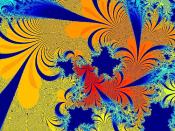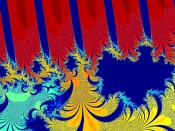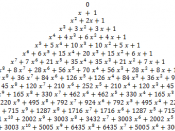Fibonacci Series of numbers can be explained as rows of number with the numbers in the row equaling the last number in the row. "The Fibonacci sequence, can be generated by the rule f1 = f2 = 1, FN+1 = FN + fn-1." (http://www.world-mysteries.com/sci_17.htm#top) . This pattern is well known in the fields of math and science, but what is really amazing is its pattern within nature. The Fibonacci number sequence could be called one of the principal "laws of nature." (http://www.world-mysteries.com/sci_17.htm#top) The Fibonacci Series of numbers can also be seen in Nature. Everything from flowers to rabbit breading, to the human head and hand can be related to the Fibonacci numbers.
Although plants may not known about this little sequence, they just grow in the most effective ways. Many plants show the numbers of Fibonacci in the arrangement of their leaves around their stem. Pine cones or fir cones also show a sequence of numbers as well as sunflowers and daisies.
In many cases the leaf arrangement is related to maximizing space for each leaf. "So nature isn't trying to use the Fibonacci numbers: they are appearing as a by-product of a deeper physical process. That is why the spirals are imperfect. The plant is responding to physical constraints, not to a mathematical rule." (http://www.world-mysteries.com/sci_17.htm#top). If a flower is examined closely enough you can see the arrangement of petals on a flower. f we were to do so, we would find that the number of petals on a flower, that still has all of its petals intact and has not lost any, for many flowers is a Fibonacci number:
3 petals: lily, iris
5 petals: buttercup, wild rose, larkspur, columbine (aquilegia)
8 petals: delphiniums
13 petals: ragwort, corn marigold, cineraria,
21 petals: aster, black-eyed Susan, chicory
34 petals: plantain,


